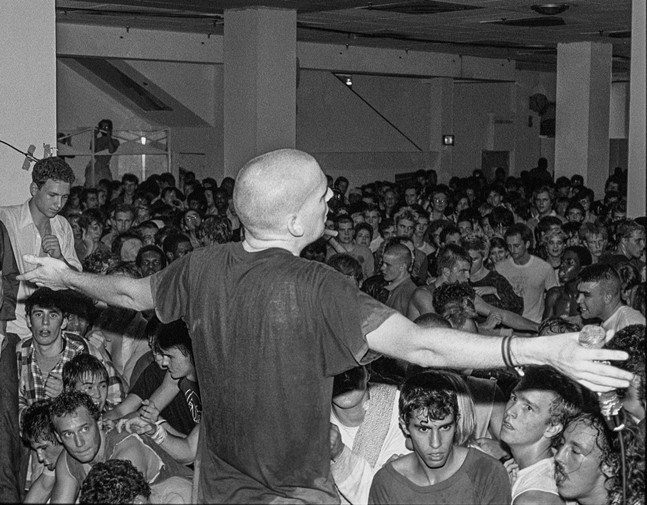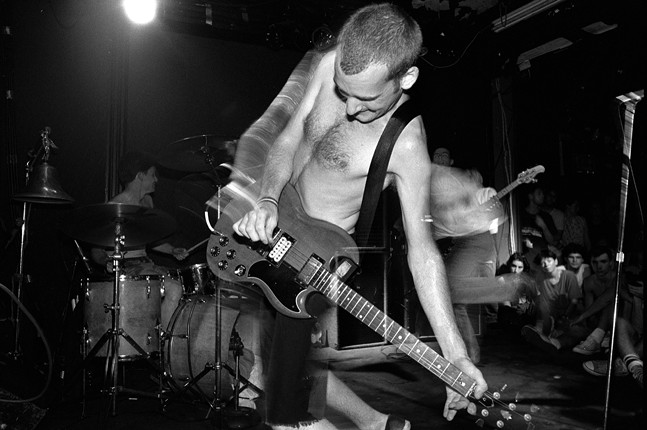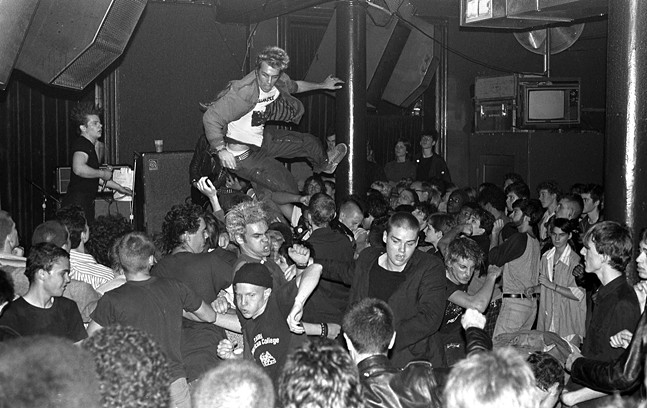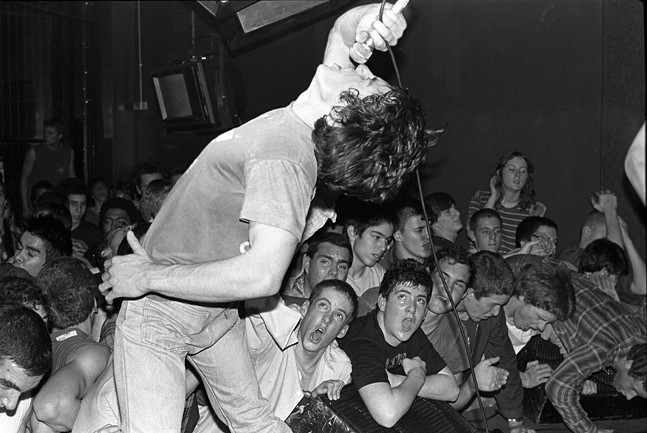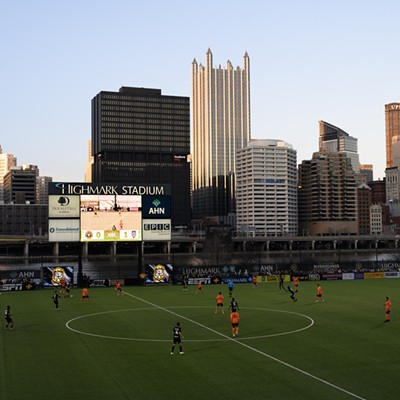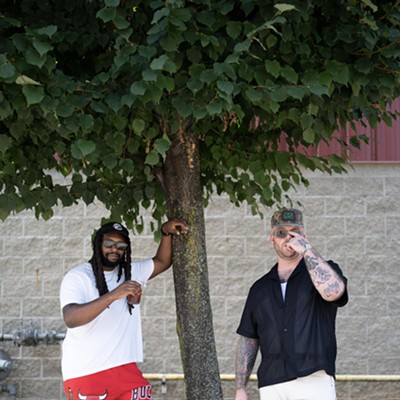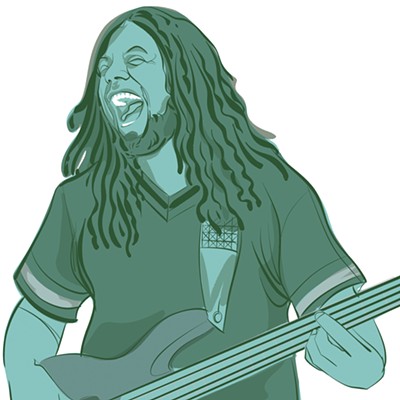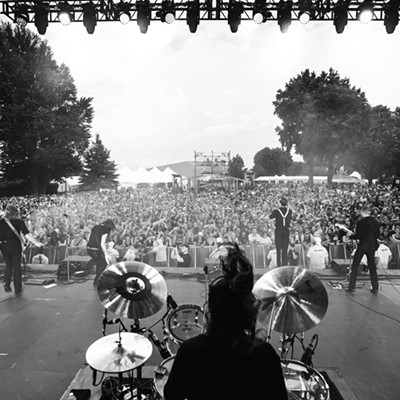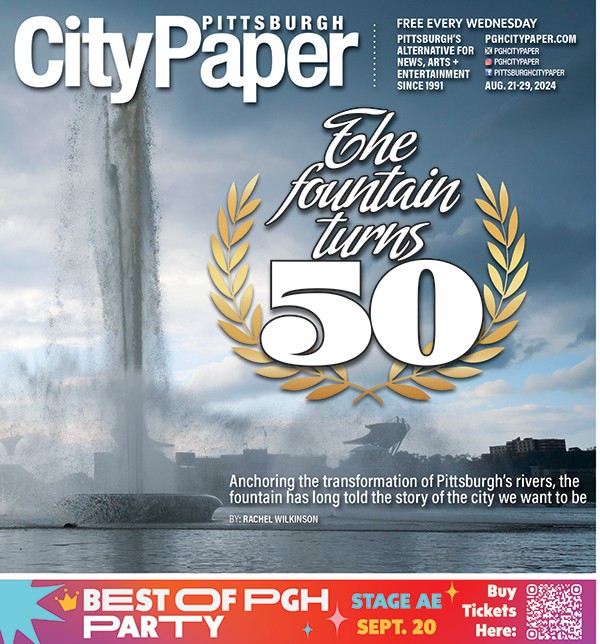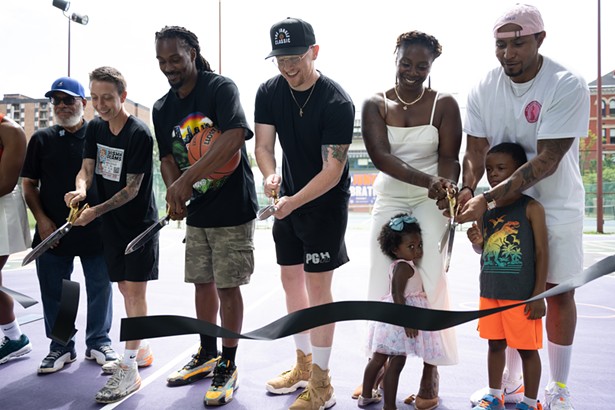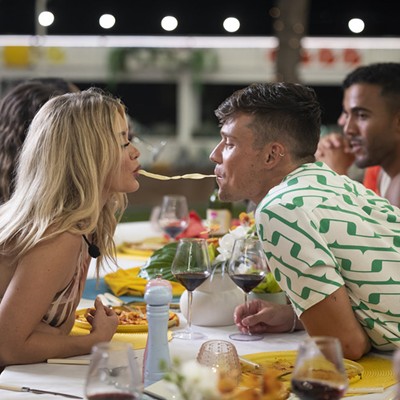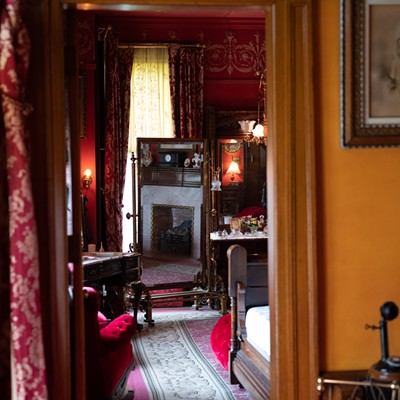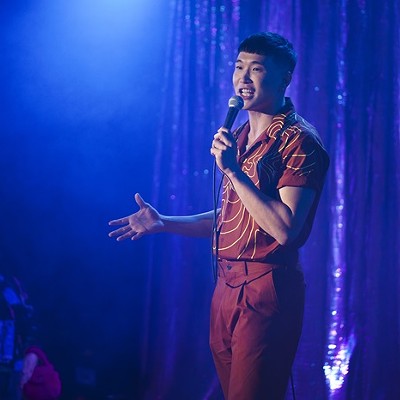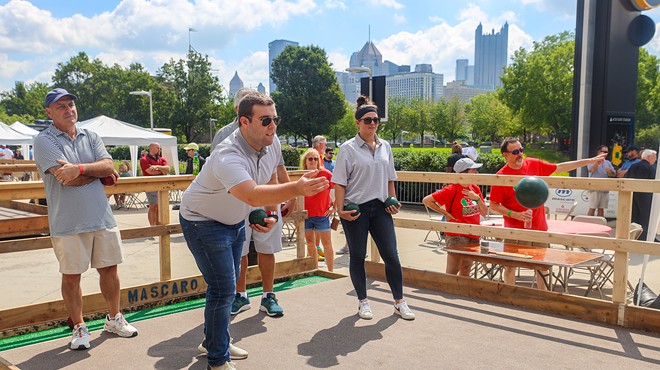If there was a punk show happening in Washington, D.C. in the early 1980s, Jim Saah was in the crowd with a camera in hand.
“I did D.C. punk rock a lot in the two or three years,” Saah, now a legendary music photographer, tells Pittsburgh City Paper. “I mean, ‘82 to ‘84, I didn't really miss a show.”
Saah’s black and white photographs of the influential Washington, D.C. punk scene during the early ‘80s, as well as pictures of groups like Talking Heads, The Pixies, and Wilco, are collected in his book In My Eyes: Photographs 1982-1997. He recently followed the 2021 release, which quickly sold out, with a second edition.
Saah will talk about the new, expanded version of In My Eyes at the Government Center on Thu., Aug. 22 during an event that also includes a solo performance by J. Robbins.
A description on Cabin 1, the publisher behind In My Eyes, says the second pressing of the 332-page book “features hundreds of impressive (and never before seen) photos of Fugazi, Minor Threat, Void, Black Flag, Circle Jerks, Dead Kennedys, Jawbox, Government Issue, The Faith, Husker Du and many, many more.” Readers will also find interviews with key figures from the D.C. scene, such as Ian MacKaye of Minor Threat and Fugazi, and J. Robbins of Jawbox and Government Issue.
The book is a visual history of a subculture of bold, politically charged music led by youth whose shaved heads and hippie-hating habits (“People wanted to look like freaks,” Saah says) had no mainstream foothold. The nation’s stately capital — at the time dealing with rising crime rates and the crack epidemic — became home to defiant bands such as Scream, Discharge, Youth Brigade, Void, and — Saah’s favorite — Minor Threat.
“What [Ian MacKaye] said was, basically, interesting things could happen in D.C. because no one was looking,” Saah says. “No one was trying to squash it, because no one was paying attention.”
After discovering the music of proto-punk bands such as The Ramones and The Stranglers at a Rocky Horror Picture Show midnight screening, Saah, who grew up in the Maryland suburbs, attended his first punk show, a double billing of Minor Threat and Government Issue at the University of Maryland in 1982.
Saah was blown away — here was a genre in which the audience, with all its thrashing, spinning, and jumping, was as much a part of the show as the musicians on stage, he says.
“I'd been to shows at a place which was basically a basketball arena called the Capital Centre — big shows, Bruce Springsteen and stuff like that,” Saah says. “But this was intimate, you were up close and personal. You could participate. It was mind-blowing.”
Saah was inspired to bring his camera — a Pentax K1000 film camera on loan from his high-school photography class — to his next show, this time at the 9:30 Club, a famed punk venue. He was rarely without a camera from then on out.
“Surprisingly and, I guess, serendipitously, I discovered these two things at the same time — photography and punk rock music,” he remembers.
A striking moment from Saah’s first show appears as the last photo in In My Eyes, showing someone frozen in the air above a pit of sweaty moshers.
“They had these infamous poles at the old 9:30 club that were kind of in the way, and he's jumping, and then he's kicking the pole, and he's pushing himself off the pole into the audience,” Saah says. “And I caught him right as his feet were on the pole, and in the audience, the people that are in the pit are all a who's who of D.C. musicians.”
Inspired by the DIY spirit of the scene, Saah published his photographs in 1983 in a zine he started called Zone V, leading to a growing appreciation of his photography among bands. His photos appeared in Minor Threat and Marginal Man’s album packaging and on the cover of Fugazi’s Repeater album.
“I think bands then wanted you to take pictures, you know, because that's how I started, getting pictures on album covers and stuff, because people kept seeing me at shows,” Saah says.
Like any flourishing art scene, things were always in flux — genres gave way to subgenres, shows got shut down, and bands broke up. Even Minor Threat, whose ideologically-driven songwriting captured the D.C. zeitgeist, disbanded in 1983 after three years of performing together.
Saah stepped out of the scene around 1984, when the scene expanded beyond its humble roots. Jocks began populating gigs, more interested in throwing people around than appreciating the music, he says.
Although most of the bands and venues he knew are long gone, Saah, who still lives outside D.C., says he still keeps in touch with many people from the scene.
Are memories of that era rose-colored by sentiment? It’s not about nostalgia, Saah says — it was, and still is, just good fucking music.
“I mean, I still listen to Minor Threat today, and I don't enjoy it on a nostalgic level,” he says. “They're just good fucking songs, and they rock. And, you know, as 17, 18-year-olds, they wrote great songs. I don't think of myself then, or think, ‘oh, this was great, reminds me of my younger days.’ I just enjoy them as songs.”

